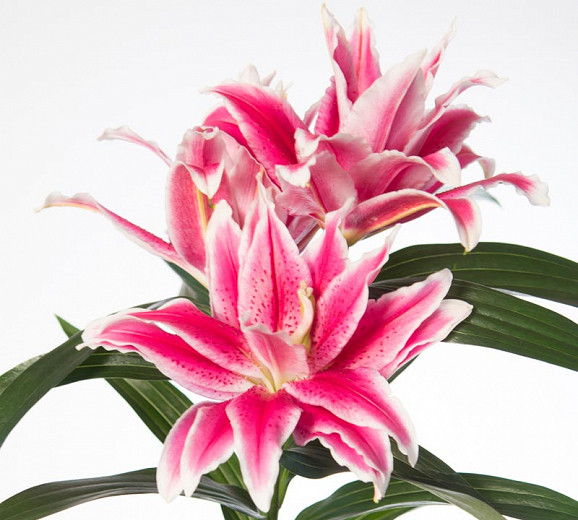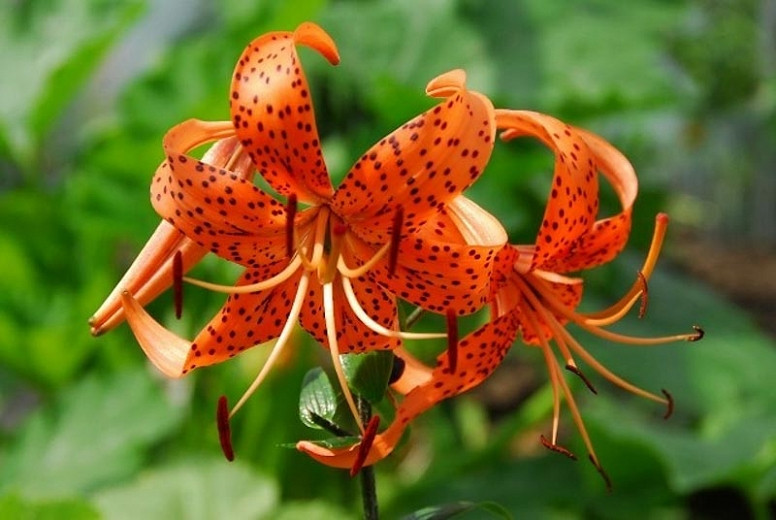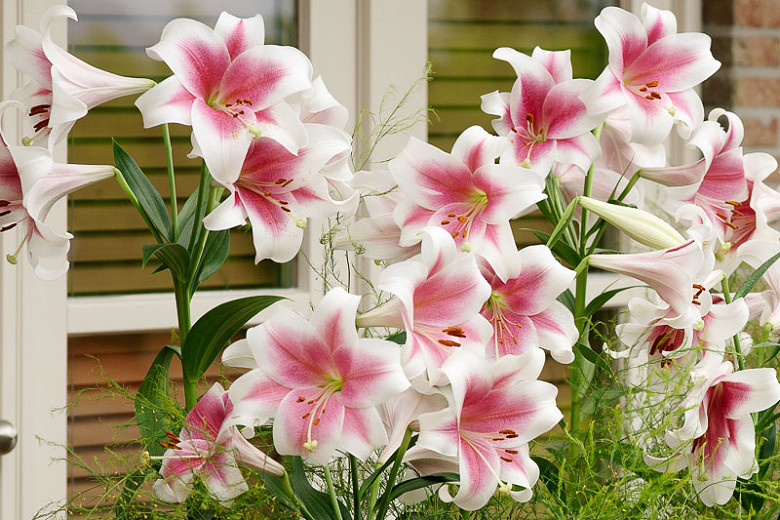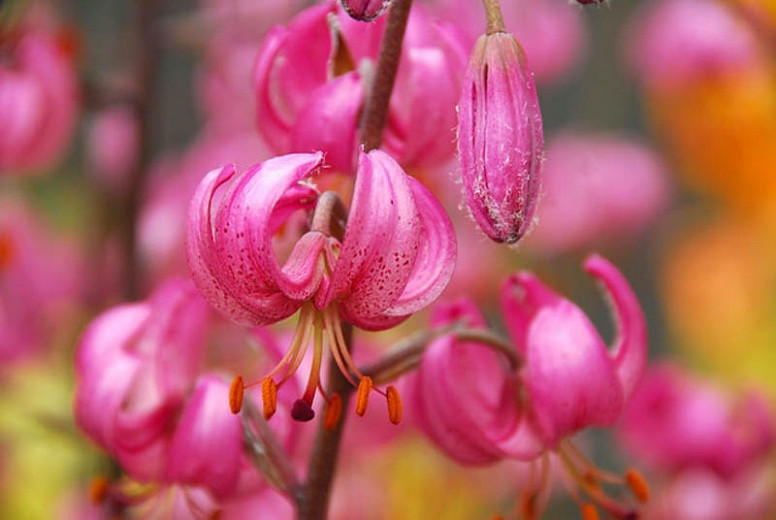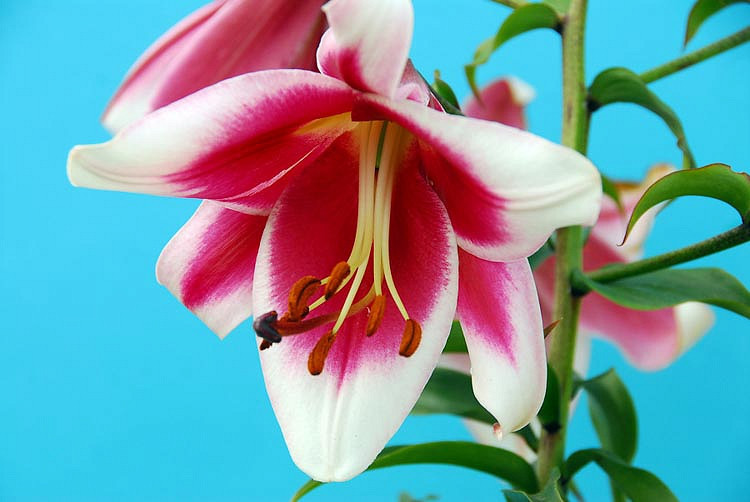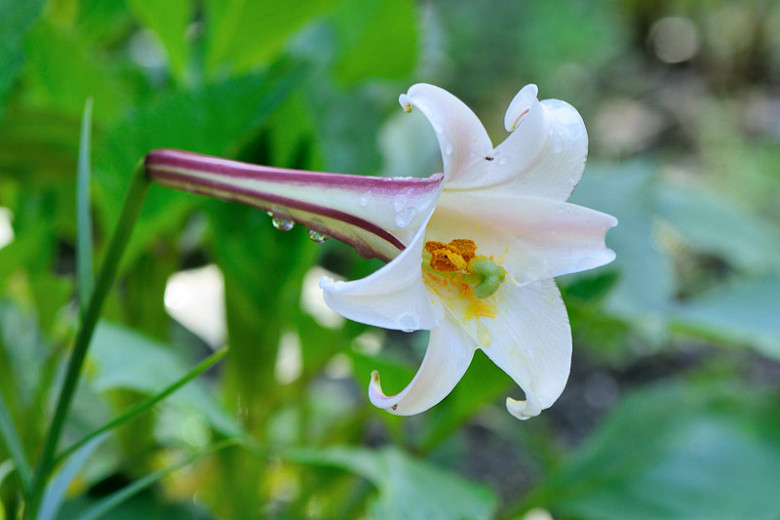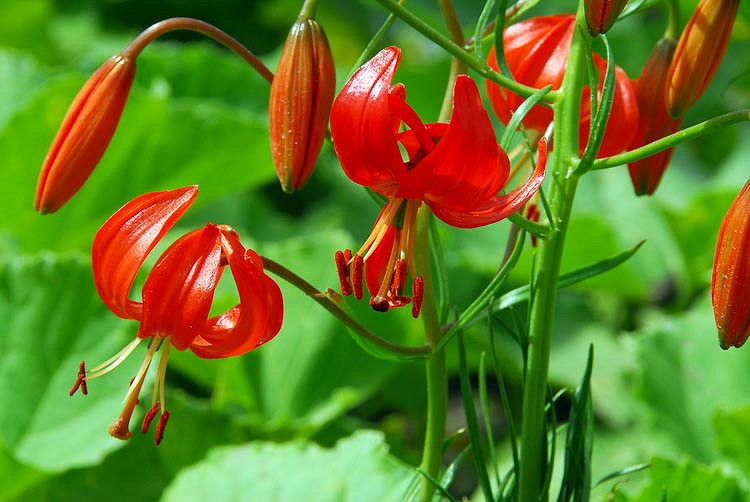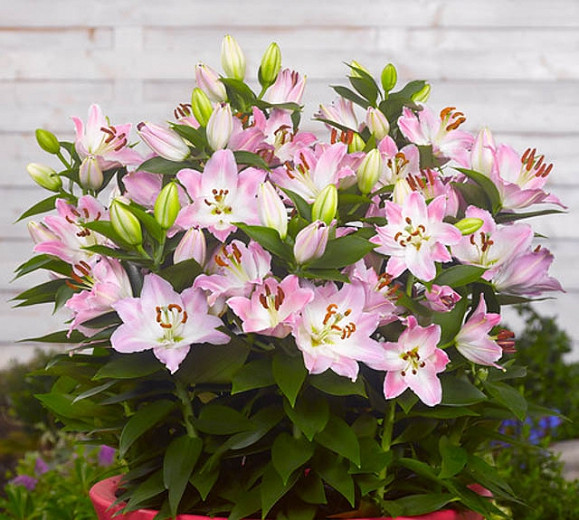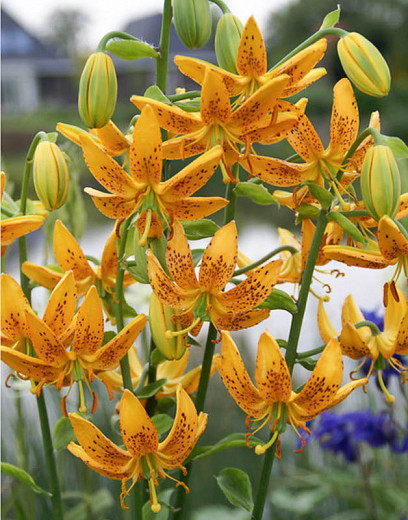Lilium Roselily Tatsjana (Double Oriental Lily)
Lilium Roselily Tatsjana (Double Oriental Lily) is a spectacular bulbous perennial with large, wonderfully fragrant, upward-facing, double rose-pink flowers adorned with contrasting pale pink petal edges in mid to late summer. The magnificent star-shaped flowers are delicately sprinkled with dark pink spots and cannot be missed! Borne on sturdy stems, they sit above the foliage of spirally arranged, glossy green leaves.
Lilium Roselily Tatsjana (Double Oriental Lily) is a spectacular bulbous perennial with large, wonderfully fragrant, upward-facing, double rose-pink flowers adorned with contrasting pale pink petal edges in mid to late summer. The magnificent star-shaped flowers are delicately sprinkled with dark pink spots and cannot be missed! Borne on sturdy stems, they sit above the foliage of spirally arranged, glossy green leaves. This double oriental lily is an excellent border plant, providing striking color and contrast to the perennial border, and mixes beautifully with annuals and other summer flowering bulbs. It is well suited to containers and the cutting garden. This double oriental lily is pollen-free.
- Grows up to 26 in. tall (65 cm) and 12 in. wide (30 cm).
- Performs best in full sun or part shade in moist but well-drained acid or neutral soil, enriched with leaf mold or well-rotted organic matter. Best in sun with some shade at the base of the plant. Stems should be staked before blooming to prevent wind damage.
- A great choice for beds and borders, city gardens, cottage gardens, and containers. Excellent fresh-cut flowers. Plant in groups of 3, 6 or 12 bulbs for a striking display.
- Keep an eye out for lily beetle, aphids, slugs, vine weevil, and gray molds.
- Toxic to cats (though not for dogs or any known species).
- Deadhead the faded blooms. When flowering is over, cut back leaves and stems after they turn yellow.
- Propagate by offsets after the foliage dies down.
- Plant in fall or early spring in the garden. Potted plants may be planted at any time between spring and fall. Plant each bulb 6-8 in. deep (15-20 cm) and 12 in. apart (30 cm).
- This Lily is a member of the Oriental Hybrids Division (VII) which includes lilies with medium-sized to very large flowers, usually bowl-shaped, flat or with recurved tepals. The inner tepals are often very broad, margins often ruffled or twisted and usually overlapping at the base, so the flower has a more ‘closed’ center. The Lily flowers are mostly white to pink to purplish red, some golden yellow and are usually fragrant. Leaves are scattered, usually broad to very broad. Often late flowering. There are 9 different types of lilies classified by the Royal Horticultural Society. And they are all real eye-catchers!
Requirements
| Hardiness | 3 – 9 |
|---|---|
| Heat Zones | 1 – 8 |
| Climate Zones | 1, 2, 3, 4, 5, 6, 7, 8, 9, 14, 15, 16, 17, 18, 19, 20, 21, 22 |
| Plant Type | Bulbs, Perennials |
| Plant Family | Lilium – Lilies |
| Exposure | Full Sun, Partial Sun |
| Season of Interest | Summer (Mid,Late) |
| Height | 2' – 3' (60cm – 90cm) |
| Spread | 1' (30cm) |
| Spacing | 12″ (30cm) |
| Depth | 6" – 8" (15cm – 20cm) |
| Water Needs | Average |
| Maintenance | Low |
| Soil Type | Clay, Loam, Sand |
| Soil pH | Acid, Neutral |
| Soil Drainage | Moist but Well-Drained |
| Characteristics | Cut Flowers, Fragrant, Showy |
| Tolerance | Deer |
| Attracts | Bees |
| Garden Uses | Beds and Borders, Patio and Containers |
| Garden Styles | City and Courtyard, Cutting Garden, Informal and Cottage, Traditional Garden |
